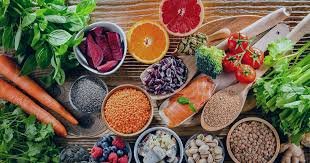Nutrition
Power in Every Bite: How food fortification is strengthening Ghana’s health

Did you know that a simple bowl of gari or salt on your table might already be helping fight malnutrition?
Across Ghana, everyday foods are being fortified with essential nutrients quietly and powerfully supporting the health of millions. This behind-the-scenes strategy, known as food fortification, is one of the most effective tools in the country’s fight against malnutrition.
While some children suffer from undernutrition, evident in stunting, wasting, and anaemia, others, especially adults, are grappling with obesity and diet-related illnesses. These issues not only affect public health but also hinder productivity and economic growth. In response, the government is strengthening its approach through food-based solutions that reach people where it matters most: their plates.
Understanding food fortification
Food fortification is the process of adding vital vitamins and minerals to commonly consumed foods to address nutrient deficiencies. In Ghana, staples like flour, salt, oil, and cereals are increasingly being fortified with iron, iodine, vitamin A, and folic acid. These enhancements target key health risks such as anaemia in women, birth defects in babies, and impaired growth in children.
The beauty of this intervention is its simplicity. People do not need to change their eating habits to benefit. By consuming fortified foods that are already part of the Ghanaian diet, families across the country can access better nutrition without added cost or effort.
Government’s role and broader goals
Government policies and partnerships have played a central role in advancing this effort. Through the enforcement of fortification standards and collaborations with local food producers, regulatory bodies like the Ghana Standards Authority and the Food and Drugs Authority are ensuring that fortified products meet safety and quality requirements. At the same time, health and agriculture ministries are working together to expand access to these foods and educate the public about their benefits.
Food fortification is also aligned with Ghana’s broader nutrition goals, including reducing child stunting and addressing anaemia among adolescent girls and pregnant women. It complements other strategies such as promoting exclusive breastfeeding, home gardening, and traditional food preservation methods.
With continued government leadership, regulatory support, and community awareness, fortified foods can become a silent but steady force in building a healthier, stronger Ghana, one meal at a time.
Feature Article by Women, Media and Change on its Nourish Ghana: Advocating for Increased Leadership to Combat Malnutrition Project.